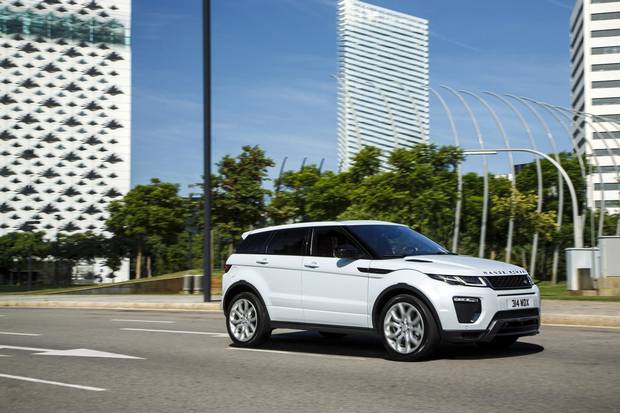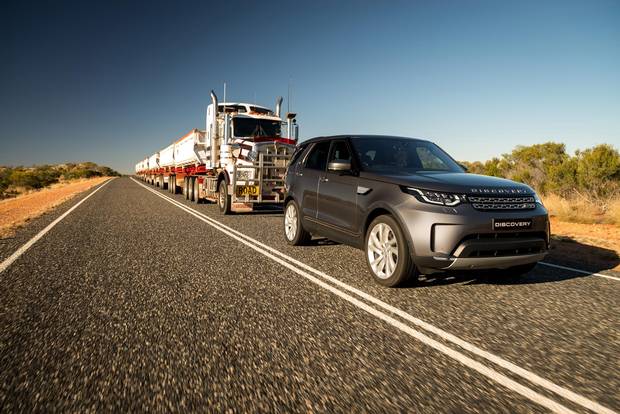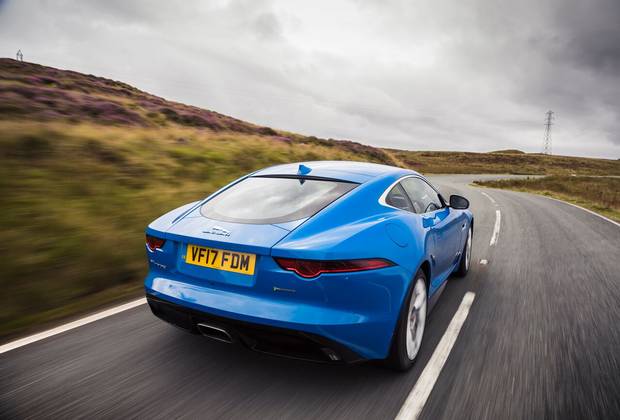Ralf Speth led the remarkable turnaround of Jaguar Land Rover, taking it from floundering British brand with outdated products on the brink of collapse to one of the fastest-growing global auto makers. If there is a fairy tale to be told about the car business postrecession, this is it. But so far, Speth, chief executive and director of Jaguar Land Rover since 2010, has kept relatively quiet.
"It's history; let's shape the future," Speth said during an interview.
The 62-year old German-born auto executive was in Toronto recently to support the Invictus Games, an Olympic-style sporting competition for war-wounded soldiers and veterans. JLR, a sponsor, announced an expansion of its veterans hiring program to Canadian dealerships. A similar program launched in Britain four years ago has recruited more than 700 veterans into the company.
Jaguar Land Rover needs all the good people it can get. It's announced six new dealerships by 2020, bringing the total to 32. Powered by SUVs, JLR just had its best September on record in Canada, and with 18-per-cent year-over-year total sales growth, it is on pace to pass 2016 totals by mid-November (10,488 units to date; 12,174 in 2016). The expanding retail network is especially about meeting customer demand for SUVs such as the F-Pace and Range Rover Sport, which led the monthly sales for Jaguar and Land Rover, respectively.
The Jaguar F-Pace is the main reason the brand has doubled its sales in Canada.
JAGUAR LAND ROVER
More new vehicles are coming down the pipeline, too. Jaguar will have high expectations for the E-Pace, a new entry-level SUV, considering the F-Pace is the main reason the brand has doubled its sales in Canada. The company's first electric car, the I-Pace, will arrive in 2018, followed by a rugged new Land Rover Defender.
Globally, while still a relatively small player, JLR has nearly tripled sales since 2009, breaking the 500,000 mark for the first time in 2016. So what is Speth's secret? What kind of magic is this?
The magic was money, and lots of it.
"At the end of the day, I think we have to say thank you very much to Ratan Tata. He was very visionary," Speth said, directing the spotlight away from himself.
Tata was chairman of the Indian conglomerate Tata Group when subsidiary Tata Motors bought Jaguar and Land Rover from Ford in 2008, just before the global recession. Sales dropped and it looked as if the company would move some manufacturing overseas from Britain. But as the economy bounced back, JLR sales picked up with the introduction of the new XJ sedan and revised Range Rovers. Speth elected to keep the British factories open, recruiting 3,000 additional workers.

The Evoque is smaller and more affordable than previous Range Rovers.
JAGUAR LAND ROVER
Speth stresses he had the freedom to restructure the business while also preparing for growth, although Ratan Tata stayed connected. He would drop into Jaguar's design studio in Britain, which is led by Ian Callum. "Whenever [Tata] came back after six or eight weeks, he visited the design centre and he'd say, 'Ian, have you changed the line?' " Speth said. "Ian would get paler. Can you imagine! The man that runs Tata Sons – more than 100 companies – comes back and [asks] if the line was changed?"
The built-in-Halewood Evoque turned out to be a huge success. Smaller, more fuel efficient and more affordable than previous Range Rovers, it's still a top seller for the company in Canada despite having been unveiled in 2011.
Since then, the company has launched a non-stop barrage of new vehicles. The full-size Range Rover – which starts at $111,500 – was revealed in 2012 and sales are still strong. It remains the benchmark for all big luxury SUVs.
Then came the smaller, more affordable version with seven seats, the Range Rover Sport, and an oddball two-door convertible version of the Evoque SUV.

The Land Rover Discovery is ‘unbelievably capable,’ CEO Speth says.
M Everingham
The seven-seat Land Rover Discovery and smaller Discovery Sport SUVs round out the bottom end of Land Rover's lineup, with the latter starting at $43,500.
The Velar, the newest model in the Range Rover lineup, is the most spectacular. This mid-size SUV ushers in the next generation of automotive infotainment with minimalist all-glass touch-screen controls. To find similar tech from other auto makers, you'd be looking at a Porsche Panamera or Audi A8, which cost nearly twice as much as the Velar.
Speth is most excited, most animated, when he's talking about new vehicles. "If you look now to Velar or Discovery, they're unbelievably capable," he said gleefully. "Think about the electronics, with the Blade [infotainment screen] technology, with our capability in the chassis."
It's true that every Land Rover can tackle extreme off-road terrain that would leave most other SUVs stuck. Even the entry-level Land Rover Discovery Sport can drive through water up to 70 centimetres deep. After the full-size XJ sedan, Jaguar unveiled the F-Type sports car, which has grown into a whole family of coupes and convertibles with engines ranging from four to six to eight cylinders and prices from $68,500 to $142,500. The compact XE and mid-size XF luxury sedans are both all-new. Their raw performance and handling put them on a level playing field with the best sport sedans from any of the German brands. Of more interest to most Canadian consumers, however, will be the E-Pace compact SUV. It's launching into a popular market niche and will be the most affordable model in Jaguar's lineup, starting at $42,700.

The F-Type sports car has grown into a whole family of coupes and convertibles.
JAGUAR LAND ROVER
As if the team in Coventry isn't busy enough, JLR has unveiled a steady stream of limited editions. The latest is the deranged XE Project 8, a 592-horsepower compact sedan with a 5.0-litre, supercharged V-8 and a rear wing so big it'd make an airplane jealous.
JLR recently committed to making all new vehicles from 2020 onward either hybrids or all electric.
"I'm optimistic that electrification is going to accelerate more than we expect it to," he said, but cautioned there's a lot of work still to be done by governments. "I'm quite sure we will have, over all, enough energy. … But we also have to make sure we get an infrastructure from home charging to [public] filling stations."
"You'll see Range Rover and Range Rover Sport at the end of this year as plug-in hybrids," Speth said. "We will have mild hybrids probably across all of our vehicles."
To meet booming demand for its expanding lineup, the company is opening new factories: one more in Britain plus facilities in India, China, Slovakia and Brazil.
Jaguar F-Pace.
JAGUAR LAND ROVER
The two brands now have more vehicles in showrooms than ever before. So, what next? Could JLR ever be as big as, say, BMW?
"Big is not everything," Speth said. "We want to have profitable, sustainable growth and we want to deliver something extra, something special. … As long as our customers have fun and we deliver products with substance – this kind of design and desire – then I don't have any fear about Jaguar Land Rover."
It remains to be seen how JLR can keep its momentum going now that the smoke has cleared after its barrage of new vehicles. A supercar perhaps, such as the C-X75 concept?
"I can see something, yes, but I can see so many other things also," Speth said in typically cagey fashion.
It's too early to tell the story of Jaguar Land Rover's remarkable postrecession turnaround because Ralf Speth isn't done yet.
Shopping for a new car? Check out the new Globe Drive Build and Price Tool to see the latest discounts, rebates and rates on new cars, trucks and SUVs. Click here to get your price.